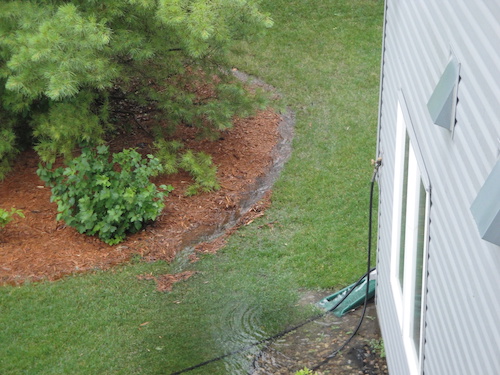Dr. Mark Seeley, author of the Minnesota Weather Almanac and a regular radio commentator on climate and weather, spoke at the Rice County Horticultural Day this morning. Seeley gave the full-house of gardeners attending the event an overview on how the weather is changing in Minnesota, with a few ideas on how to accommodate it.
Here are my take-aways from the talk:
- It’s not that the highs are getting higher, it’s that the lows are getting higher. Higher average night-time low temperatures and higher temperatures in winter are what most of us have been observing when we’ve noticed climate change in the past decade or two. Seeley’s graphs show clearly that we are in a shifting weather pattern and the shifts are heavily concentrated in winter.
- It’s not the heat, it’s the humidity. In addition to higher low temperatures, we are seeing rises in humidity to the point where the heat emergency days in Minnesota in the past few years have largely been due to high humidity (70 degree dew points) coupled with sort of high temperatures (90s). I noted that Rice County was one of several counties that had experienced more than 10 days where dew points were above 80 in the past few years. These weather patterns have also produced larger numbers of thunderstorms, resulting in more rain falling in gushes rather than trickles.
- It’s not just SUVs causing the problem. While emissions from vehicles and industry (especially less-clean industries in developing countries like China and India) are part of the problem, Seeley is passionate that people not overlook other causes of climate change, including natural factors and the changes in land use. Every time a wild area becomes a corn field or a corn field becomes a housing development we are changing the land and environment, and that, in turn, can change the climate. (I’ve observed this first hand over the past 9 years as our neighborhood went from cornfield to suburb-like, and the spring frog noises changed from delightfully deafening to faint.) Some changes are small–extra driveways, grass instead of prairie–but they add up. Some are huge, such as the destruction of large amounts of boreal forests in Alberta, Canada, to mine for tar sands.
- Despite the changes, it can still get darn cold in Minnesota. Seeley recalled a day in February 1996 when temperatures dropped to 35 below zero. For the gardeners in attendance, his message seemed similar to one I’ve heard from others who watch climate: go ahead and try higher zone plants, but be prepared to lose them in a bad winter.
- Finally, we need to pay attention to this. Little changes can add up–and things that sound like a great idea (I’m thinking ethanol here) may not be so great after all. As gardeners, we can put more oxygen into the air, and we can watch and care for our own little corners of the earth. I’m on a multi-year plan to reduce lawn and increase gardens on our lot because gardens, especially those planted with flowers and shrubs suited to Minnesota’s bizarre climate, can handle the changes better and require less in the way of nutrients and water to survive. Is that a big deal? No. But it’s one thing I can do.
Update from 2018: While this post was written a long time ago, the points Mark Seeley made hold true. More so than ever. I’m still planting as many natives as I can and other heritage plants that can make it in our tough climate.

[…] (It has to do with which species they are bred from.) At an earlier hort day, Mark Seeley gave a frightening talk about climate change that reinforced my sense that gardeners need to protect their little corners […]